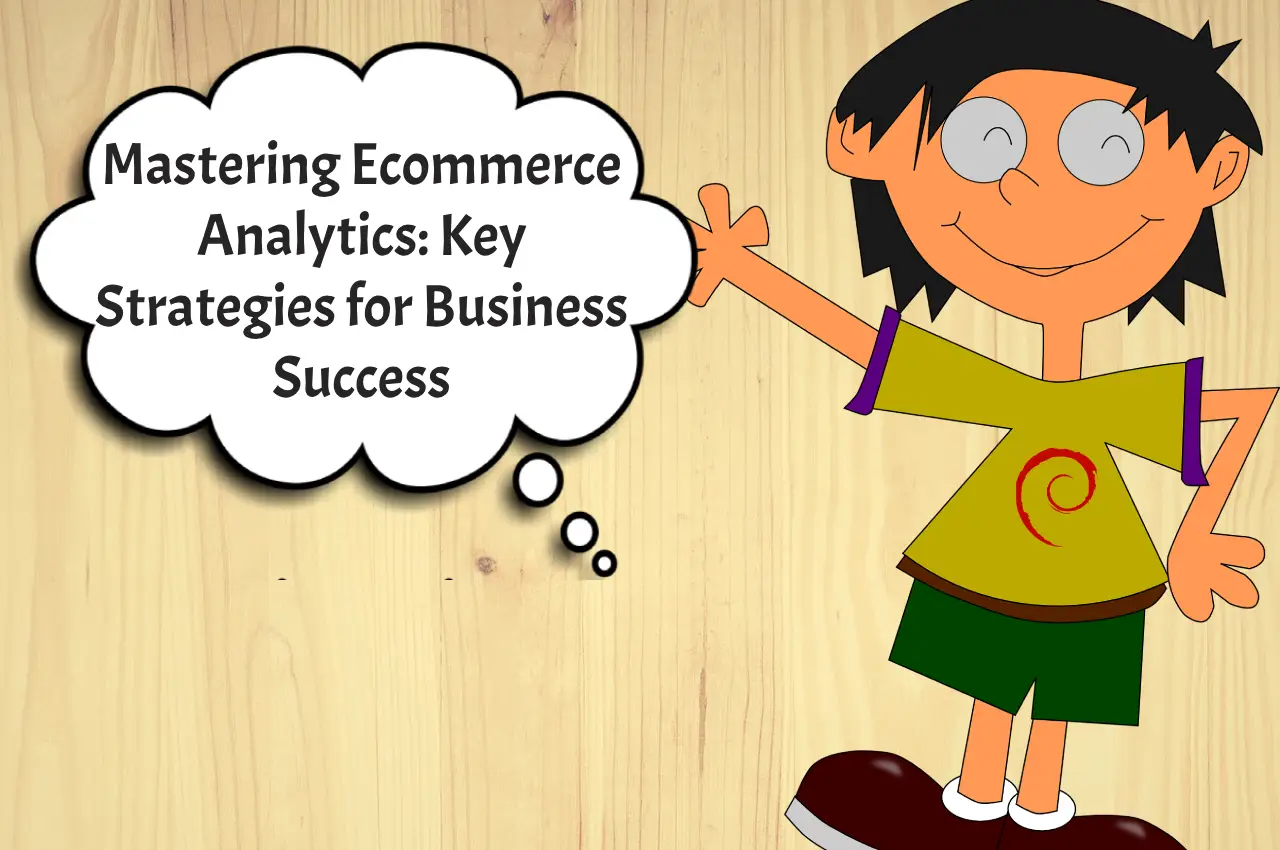Crafting a successful ecommerce business requires more than just a sleek website and quality products. In today’s digital age, understanding your customers and their behavior is paramount to achieving sustainable growth. Welcome to the world of ecommerce analytics, where data reigns supreme in guiding decisions and driving success.
Unlocking the potential of ecommerce analytics can be a game-changer for businesses aiming to thrive in the online marketplace. From tracking website traffic to analyzing customer demographics and preferences, the insights derived from analytics hold the key to unlocking new opportunities and maximizing profitability.
Understanding Ecommerce Analytics
Ecommerce analytics encompasses the collection, measurement, and analysis of data related to online transactions and customer interactions. By leveraging various tools and platforms, businesses can gain valuable insights into their performance, customer behavior, and market trends. This data-driven approach enables informed decision-making and empowers businesses to optimize their strategies for success.
The Importance of Tracking Metrics
In the vast landscape of ecommerce analytics, numerous metrics provide valuable insights into different aspects of your business. Some key metrics to track include:
Traffic Sources: Understanding where your website traffic is coming from can help identify effective marketing channels and areas for improvement.
Conversion Rate: Monitoring conversion rates allows you to evaluate the effectiveness of your website design, product offerings, and marketing campaigns.
Average Order Value (AOV): Tracking AOV can help increase revenue by encouraging upsells and cross-sells or offering incentives for larger purchases.
Customer Lifetime Value (CLV): Calculating CLV helps predict future revenue and tailor marketing strategies to maximize customer retention and loyalty.
Cart Abandonment Rate: Addressing cart abandonment issues can help improve the overall conversion rate and increase sales.
By analyzing these metrics and identifying trends over time, businesses can identify strengths and weaknesses in their ecommerce strategy and make data-driven decisions to drive growth.
Leveraging Data for Personalization
One of the most powerful aspects of ecommerce analytics is its ability to enable personalized experiences for customers.
By analyzing customer data, such as browsing history, purchase behavior, and demographic information, businesses can tailor their approach. They can offer product recommendations, marketing messages, and promotions that align with individual preferences.
For example, a clothing retailer can use purchase history data to recommend complementary items. They can also suggest personalized styling tips based on past purchases. Similarly, an online grocery store can offer customized discounts on frequently purchased items. This enhances the shopping experience and fosters customer loyalty.
Real-World Examples of Success
The impact of ecommerce analytics on business success is evident across various industries. Consider the following examples:
Amazon: With its vast repository of customer data and sophisticated analytics capabilities, Amazon excels at personalization, recommending products based on past purchases and browsing behavior.
Netflix: By analyzing viewer preferences and viewing habits, Netflix delivers personalized recommendations for movies and TV shows, enhancing the user experience and driving engagement.
Sephora: Through its Beauty Insider program, Sephora collects data on customer preferences and purchasing behavior, allowing for personalized product recommendations and targeted marketing campaigns.
These examples highlight the transformative power of ecommerce analytics in driving customer engagement, satisfaction, and loyalty.
Expanding the Depth of Ecommerce Analytics
Beyond the fundamental aspects of ecommerce analytics, there are additional layers of depth and complexity that businesses can explore to further enhance their understanding and optimization of online operations. Let’s delve into some advanced strategies and techniques:
1. Predictive Analytics
Predictive analytics utilizes historical data, statistical algorithms, and machine learning techniques to forecast future trends and behaviors. By analyzing past purchasing patterns and customer interactions, businesses can anticipate future demand, identify potential opportunities, and mitigate risks. For example, an ecommerce retailer can use predictive analytics to forecast inventory requirements, optimize pricing strategies, and personalize marketing campaigns based on predicted customer preferences.
2. Cohort Analysis
Cohort analysis involves grouping customers based on shared characteristics or behaviors and analyzing their interactions with the business over time. This approach provides insights into customer retention, engagement, and lifetime value within specific cohorts. By understanding how different customer segments evolve over time, businesses can tailor their marketing efforts and customer retention strategies to maximize long-term profitability.
3. A/B Testing
A/B testing, also known as split testing, involves comparing two or more versions of a webpage, marketing email, or advertisement to determine which performs better in terms of conversion rates or other key metrics. By systematically testing variations in design, messaging, or functionality, businesses can identify and implement changes that lead to improvements in performance. A/B testing enables data-driven decision-making and continuous optimization of ecommerce strategies to maximize effectiveness and ROI.
4. Customer Segmentation
Customer segmentation involves dividing a target market into distinct groups based on shared characteristics, such as demographics, behavior, or purchasing habits. By segmenting customers, businesses can tailor their marketing messages, product offerings, and pricing strategies to better meet the needs and preferences of different segments. Customer segmentation allows for more personalized and targeted marketing efforts, leading to higher conversion rates and customer satisfaction.
5. Attribution Modeling
Attribution modeling is the process of determining the relative impact of various marketing channels. It also assesses touchpoints on a customer’s decision to make a purchase. By assigning credit to different channels, businesses can better understand their influence along the customer journey. This helps them optimize their marketing mix and allocate resources more effectively. Attribution modeling enables a deeper understanding of the customer’s path to purchase. It helps identify the most effective channels for driving conversions and ROI.
6. Advanced Data Visualization
Data visualization techniques, such as heatmaps, funnel analysis, and cohort charts, help businesses visualize and interpret complex datasets more effectively. By presenting data in visually compelling and intuitive formats, businesses can identify trends, patterns, and outliers more easily, enabling faster and more informed decision-making. Advanced data visualization tools empower ecommerce professionals to explore data from multiple perspectives and gain deeper insights into customer behavior and market dynamics.
7. Integration with CRM Systems
Integrating ecommerce analytics with customer relationship management (CRM) systems allows businesses to combine transactional data with customer insights, enabling a more holistic view of the customer journey. By centralizing customer data and interactions across multiple touchpoints, businesses can deliver more personalized experiences, improve customer service, and foster long-term loyalty. Integration with CRM systems enables seamless data sharing and enhances the effectiveness of ecommerce analytics initiatives.
Embracing a Data-Driven Culture
In today’s competitive ecommerce landscape, businesses that embrace a data-driven culture are poised for success. By prioritizing the collection, analysis, and utilization of data, companies can gain valuable insights into customer behavior, market trends, and competitive dynamics, enabling them to stay ahead of the curve and drive sustainable growth.
Conclusion
Ecommerce analytics is more than just a tool—it’s a strategic imperative for businesses looking to thrive in the digital age. By harnessing the power of data and analytics, companies can gain invaluable insights into their customers, optimize their strategies, and unlock new opportunities for growth. Are you ready to take your ecommerce business to the next level?
What are your thoughts on ecommerce analytics? Have you implemented any analytics strategies in your business? Share your experiences and insights in the comments below!





